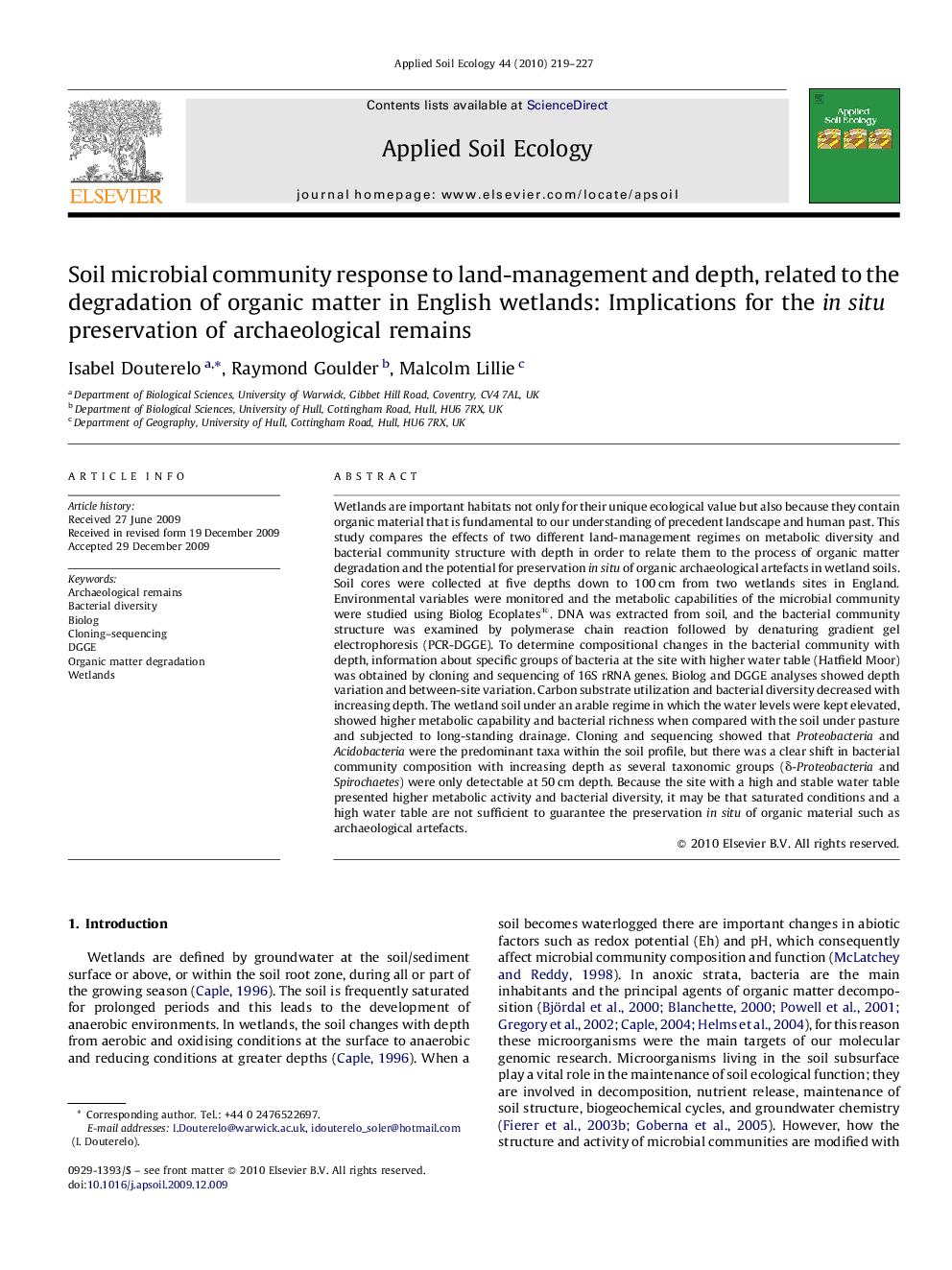| کد مقاله | کد نشریه | سال انتشار | مقاله انگلیسی | نسخه تمام متن |
|---|---|---|---|---|
| 4382854 | 1304235 | 2010 | 9 صفحه PDF | دانلود رایگان |
عنوان انگلیسی مقاله ISI
Soil microbial community response to land-management and depth, related to the degradation of organic matter in English wetlands: Implications for the in situ preservation of archaeological remains
دانلود مقاله + سفارش ترجمه
دانلود مقاله ISI انگلیسی
رایگان برای ایرانیان
کلمات کلیدی
موضوعات مرتبط
علوم زیستی و بیوفناوری
علوم کشاورزی و بیولوژیک
بوم شناسی، تکامل، رفتار و سامانه شناسی
پیش نمایش صفحه اول مقاله

چکیده انگلیسی
Wetlands are important habitats not only for their unique ecological value but also because they contain organic material that is fundamental to our understanding of precedent landscape and human past. This study compares the effects of two different land-management regimes on metabolic diversity and bacterial community structure with depth in order to relate them to the process of organic matter degradation and the potential for preservation in situ of organic archaeological artefacts in wetland soils. Soil cores were collected at five depths down to 100 cm from two wetlands sites in England. Environmental variables were monitored and the metabolic capabilities of the microbial community were studied using Biolog Ecoplates®. DNA was extracted from soil, and the bacterial community structure was examined by polymerase chain reaction followed by denaturing gradient gel electrophoresis (PCR-DGGE). To determine compositional changes in the bacterial community with depth, information about specific groups of bacteria at the site with higher water table (Hatfield Moor) was obtained by cloning and sequencing of 16S rRNA genes. Biolog and DGGE analyses showed depth variation and between-site variation. Carbon substrate utilization and bacterial diversity decreased with increasing depth. The wetland soil under an arable regime in which the water levels were kept elevated, showed higher metabolic capability and bacterial richness when compared with the soil under pasture and subjected to long-standing drainage. Cloning and sequencing showed that Proteobacteria and Acidobacteria were the predominant taxa within the soil profile, but there was a clear shift in bacterial community composition with increasing depth as several taxonomic groups (δ-Proteobacteria and Spirochaetes) were only detectable at 50 cm depth. Because the site with a high and stable water table presented higher metabolic activity and bacterial diversity, it may be that saturated conditions and a high water table are not sufficient to guarantee the preservation in situ of organic material such as archaeological artefacts.
ناشر
Database: Elsevier - ScienceDirect (ساینس دایرکت)
Journal: Applied Soil Ecology - Volume 44, Issue 3, March 2010, Pages 219-227
Journal: Applied Soil Ecology - Volume 44, Issue 3, March 2010, Pages 219-227
نویسندگان
Isabel Douterelo, Raymond Goulder, Malcolm Lillie,